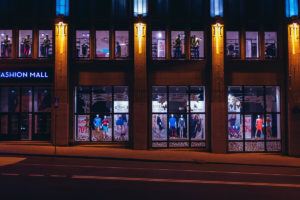 As a Loss Prevention Manager I always had three things I felt were my top priorities. The safety of our store employees, the safety of our customers and the protection of store property. Property in my mind always included the building (interior and exterior), equipment and merchandise. Planning and follow-up are the keys to keeping a store safe and secure. I would mention that while I broke down my focus to three top priorities, my action plans always intersected. In other words, a plan for protecting a building from vandalism with adequate, working perimeter lights also made it safer for customers who walked to a housing area behind our store. With this in mind, it is important to create action plans that are relevant, sometimes adjusting for seasons such as holidays or being prepared for weather events such as hurricanes. One change that is easily overlooked is the shortened daylight hours in the fall and winter. With darkness descending upon us earlier there are steps Loss Prevention can take to keep stores safe.
As a Loss Prevention Manager I always had three things I felt were my top priorities. The safety of our store employees, the safety of our customers and the protection of store property. Property in my mind always included the building (interior and exterior), equipment and merchandise. Planning and follow-up are the keys to keeping a store safe and secure. I would mention that while I broke down my focus to three top priorities, my action plans always intersected. In other words, a plan for protecting a building from vandalism with adequate, working perimeter lights also made it safer for customers who walked to a housing area behind our store. With this in mind, it is important to create action plans that are relevant, sometimes adjusting for seasons such as holidays or being prepared for weather events such as hurricanes. One change that is easily overlooked is the shortened daylight hours in the fall and winter. With darkness descending upon us earlier there are steps Loss Prevention can take to keep stores safe.
Safety precautions to take as days get shorter:
- Inspect parking lot lights. If lights are burned out place a work order to have them repaired/replaced. Dark parking lots make customers uncomfortable and they may choose not to shop in your store.
- Inspect building exterior lighting. These are the lights that are on the walls of the building and at the corners. Criminals tend to prey on victims in areas with poor or no lighting.
- Inspect the back of the store and loading dock areas. Often this is the place where cardboard bales are kept, empty pallets are stacked and some stores maintain dumpsters. If storage has to be kept here keep the area as neat and clean as possible. Unkempt areas are attractive to drug and other illicit activities.
- If your store has a storage trailer(s) located at the rear of the building, establish a time when employees are not allowed to leave the building to pull merchandise or store merchandise in the trailer. This should be no later than dusk and that may be a flexible time as the days get shorter.
- Encourage employees who are leaving in the dusk to dark hours to leave with a partner. It may be that they ask for a Loss Prevention partner to escort them to their vehicle if no one else is leaving at that time. Always remember that a buddy system is the best method to prevent robberies of employees.
- Increase parking lot foot patrols. Being visible makes customers feel safer and acts as a deterrent to those who may lurk in the parking lot waiting for an opportunity to grab a purse or commit a robbery.
- Consider hiring a uniformed security officer or an employee to be present at the front door. They can respond to EAS alarms and conduct receipt checks, but they can also offer escorts to customers leaving the building. They may also step outside the doors to do a visual inspection of the parking lot. One store I worked at had a person who was hired to do just this and they were called a “Guest Ambassador”. This person should not be used as a back-up cashier because the tendency is to keep them on a register and they lose their effectiveness at the front doors.
- Employees will go on breaks and some are smokers. If you are going to have a designated smoking area, be sure it is well lit and it should not be in a secluded area for the safety of those who may go out after dark.
- Inspect any exterior closed circuit television cameras you may have on the building. Make sure they are functioning, have clear pictures, and are retaining video for at least two weeks (preferably 30 days).
- Find ways to build a relationship with the police department responsible for the area where your store is located. Contact a Crime Prevention Officer and offer to assist with Santa Helper events, children’s car seat safety events, or other activities that the department is helping for community outreach. As you build a relationship, you may find more officers using your parking lot to stop and write reports or conducting ride by patrols. The more police presence, the less likely crime will occur in or around your store. This is always a bonus at night.
The tips are not exhaustive, there are other ideas you may think of as you create a plan specific to your store and location. By being proactive and establishing a plan that will keep your store safe as the nights get longer, you will protect your business and your reputation and as a result drive up sales.
 Hiring seasonal help for the holidays is much different from when a company hires to fill a position or two during the “regular” times of the year. During what I have traditionally called the 4
Hiring seasonal help for the holidays is much different from when a company hires to fill a position or two during the “regular” times of the year. During what I have traditionally called the 4 Ghosts, goblins, zombies, it’s that time of the year again to dust off the spooky movies and scary tales meant to put a chill up your spine. Hollywood always seems to have a batch of new releases ready about now to evoke nightmares and make us wake up in a cold sweat. We are sure that we see a poltergeist lurking in the corner of the bedroom or in the closet after we watch one of these films. Yes, I admit I am a big coward and have to put my hands over my face and peek out through my fingers to watch Freddy slash his next victim or Jason terrorize a group of kids at a camp in the middle of the woods. But there are real scary stories of my own to share that don’t have anything to do with ghouls. Mine are real-life scary stories of shoplifters I have dealt with during my years in retail Loss Prevention.
Ghosts, goblins, zombies, it’s that time of the year again to dust off the spooky movies and scary tales meant to put a chill up your spine. Hollywood always seems to have a batch of new releases ready about now to evoke nightmares and make us wake up in a cold sweat. We are sure that we see a poltergeist lurking in the corner of the bedroom or in the closet after we watch one of these films. Yes, I admit I am a big coward and have to put my hands over my face and peek out through my fingers to watch Freddy slash his next victim or Jason terrorize a group of kids at a camp in the middle of the woods. But there are real scary stories of my own to share that don’t have anything to do with ghouls. Mine are real-life scary stories of shoplifters I have dealt with during my years in retail Loss Prevention.


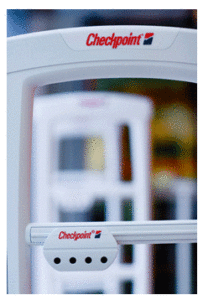 forbid a competitive system). It is installed and your shoplifting losses go down. They will! The simple act of installing a system will make a percentage of your shoplifters go elsewhere.
forbid a competitive system). It is installed and your shoplifting losses go down. They will! The simple act of installing a system will make a percentage of your shoplifters go elsewhere.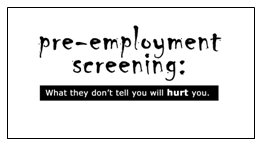


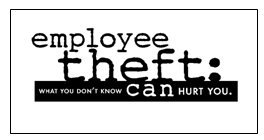 ch these live webinars as reasonably often as you need. Staff turnover, promotions, follow up training, one employee or fifty…. Just schedule the session. Oh, by the way. I will also provide you with 15 draft LP Policies and Procedures that you can customize to your operation. Shoplifting, employee theft, robbery, key control…..
ch these live webinars as reasonably often as you need. Staff turnover, promotions, follow up training, one employee or fifty…. Just schedule the session. Oh, by the way. I will also provide you with 15 draft LP Policies and Procedures that you can customize to your operation. Shoplifting, employee theft, robbery, key control…..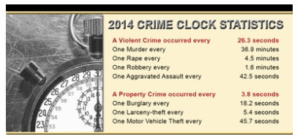
 If you work in retail then you know theft is a big problem. The theft of supplies, merchandise, time and money are just a few of the things managers have to deal with daily. They have to address it on many fronts (i.e., impulse and professional shoplifters, employees and their friends and families, vendors).
If you work in retail then you know theft is a big problem. The theft of supplies, merchandise, time and money are just a few of the things managers have to deal with daily. They have to address it on many fronts (i.e., impulse and professional shoplifters, employees and their friends and families, vendors).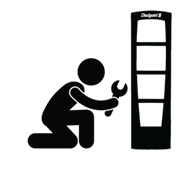 Retail alarms are necessary to ensure a store is protected against break-ins and even theft from within. I know from personal experience that they work. As a Loss Prevention Manager I once had to respond to a burglary alarm when two young men threw a cement block through the front doors of my store in the middle of the night. I also responded to a number of false alarms due to system errors and failures. As a Manager On Duty I know that it can be stressful wondering if you locked all the doors and set the alarm at the end of the night. With those situations in mind, I would like to provide some practical tips to help avoid excessive false alarms and worry about building security.
Retail alarms are necessary to ensure a store is protected against break-ins and even theft from within. I know from personal experience that they work. As a Loss Prevention Manager I once had to respond to a burglary alarm when two young men threw a cement block through the front doors of my store in the middle of the night. I also responded to a number of false alarms due to system errors and failures. As a Manager On Duty I know that it can be stressful wondering if you locked all the doors and set the alarm at the end of the night. With those situations in mind, I would like to provide some practical tips to help avoid excessive false alarms and worry about building security.